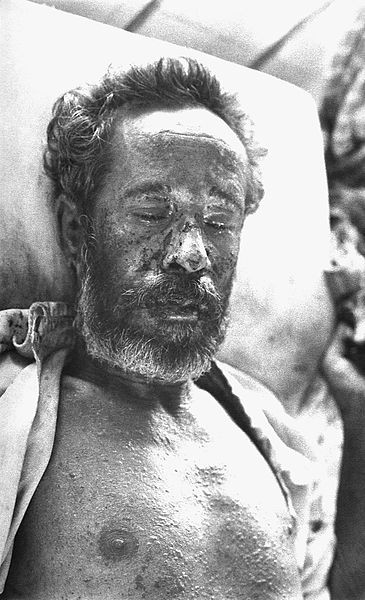Delaying the Destruction of the Last Smallpox Samples in the World

Experts in the United States argue that it's still not time to destroy the last known stockpiles of smallpox samples in the world, but many officials disagree.
Three decades after smallpox has been officially eradicated, many world officials are calling for the destruction of the two last known stockpiles of smallpox samples used for tightly-controlled scientific study -- one located in the United States and the other located in Russia.
According to the World Health Organization (WHO), world leaders agreed that these sample stockpiles would eventually be destroyed after the Smallpox Eradication Programme met success. The program achieved its goal when the WHO officially declared the eradication of smallpox in 1980. However, the World Health Assembly (WHA) has repeatedly delayed the final step of destroying lab samples of the deadly virus, granting time to WHO sanctioned scientists so that they may create drugs and vaccines as a precautionary measure against a hypothetical return of the pandemic.
Now however, a modern generation of the smallpox vaccine has been developed -- as detailed in the 61st World Health Assembly. Additionally, two antiviral treatments for the deadly disease are in their final steps of creation. This is more than enough for many world officials, and they are now saying its finally time to wipe the virus even from labs once and for all.
The world's health ministers are scheduled to meet and debate this very subject later this month, according to the Associated Press (AP).
However, some experts are saying it is still too soon.
"Despite significant advances, there is more work to be done before the international community can be confident that it possesses sufficient protection against any future smallpox threats ... we argue that the research agenda with live variola virus is not yet finished and that significant gaps still remain." Dr. Inger Damon, poxvirus chief at the federal Centers for Disease Control and Prevention (CDC), wrote Thursday in the journal PLoS Pathogens.
According to Damon and other CDC experts, while vaccination and treatment option for smallpox in particularly are now adequate, the applications for variola virus study that can lead to a higher understanding of orthopoxviruses -- in which the smallpox variola virus remains the sole human transmitted version. If another human transmittable orthopoxvirus war to arise, the researchers argue that having the samples on hand would be beneficial.
The WHA is slated to determine the fate of the viral samples later this May.
The PLoS Pathogens article was published on May 1.
May 02, 2014 03:07 PM EDT




